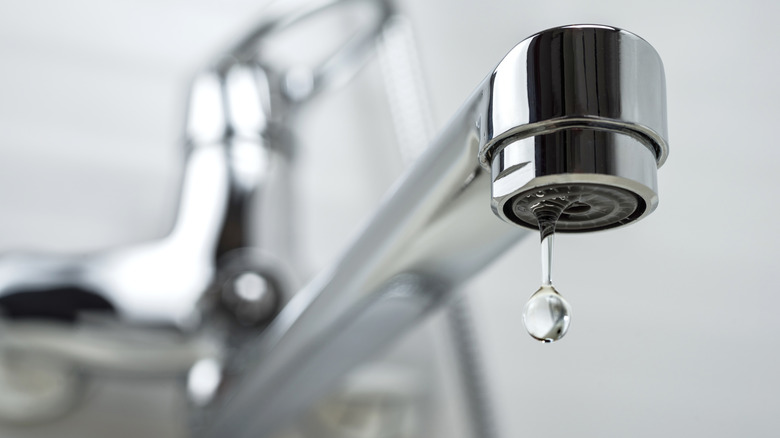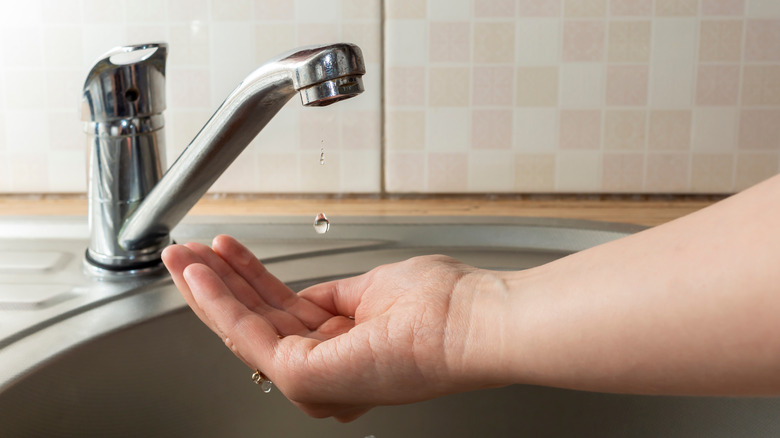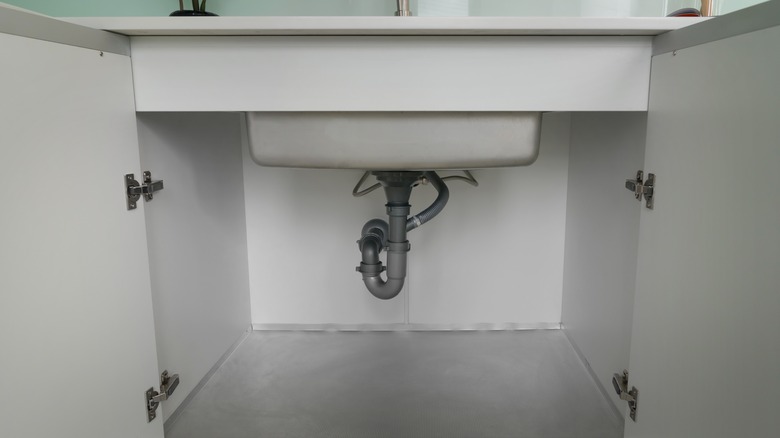Does Letting Your Faucets Drip In Cold Weather Really Do Anything?
Along with the typical challenges of icy roads and appropriately layering outfits, chilly weather means many people are faced with the question of how to properly prevent their pipes from freezing. According to Afterdisaster, frozen pipes are the second most common cause of water damage, just behind hurricanes, and over 250,000 households in the United States have to pay for expensive repairs each year. There are quite a few prevention methods that have become common knowledge, but one of the most popular recommendations is to keep your faucets running at a slow drip.
Regardless of if you're an expert on handling winter weather or if you're new to the art of fending off burst pipes, you've likely wondered if leaving your faucets on actually does anything, or if you're just wasting water based on a rumor. We're here to provide you with the answer and arm you with the proper knowledge to prevent damage the next time temperatures suddenly drop.
Does letting your faucets drip actually work?
It turns out, the answer to this question is complicated. Pipes burst in the winter because frozen water takes up more surface area than liquid water, putting excess pressure on full pipes as temperatures dip low enough to freeze. The thought process behind the dripping faucet method is that if you keep the tap flowing, your pipes will consistently pull warmer water from the ground and replace the near-freezing water before it gets the chance to fully harden.
According to Legacy Plumbing, however, this isn't necessary if your pipes are already kept warm by the heat of your house, so turning on your kitchen or bathroom tap likely won't do much. If you have a faucet on an exterior wall, however, the pipes are more vulnerable to the cold. Turning on the water — both hot and cold — will help prevent freezing, but there are other methods you can use to protect your pipes as well.
Other methods
The American Red Cross has a comprehensive guide on how to protect against, prevent, and thaw frozen pipes. Alongside dripping exterior faucets, they also recommend a few other prevention measures. During a hard freeze, you'll likely already be running the heat in your home, so opening cabinets and exposing your pipes can help warmer air circulate around them to prevent bursting. They also say you should keep your heater on and consistently set at least 55 degrees, even if you're away for a few days.
If you live in an area that frequently sees chilly weather, you already more than likely have a solid amount of protection around your pipes, in the attic, and throughout crawl spaces, but if you're dealing with consistently lower temperatures for the first time, it's a good idea to check if you need to replace your insulation. Making sure your home and pipes are adequately insulated is by far the best way to avoid winter damage, and it can help lower your heating bill, too.


